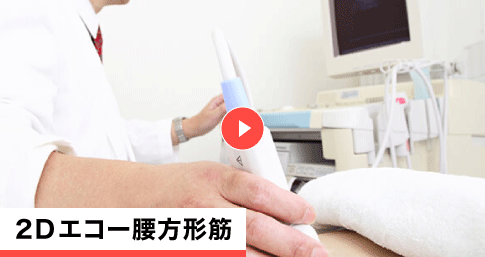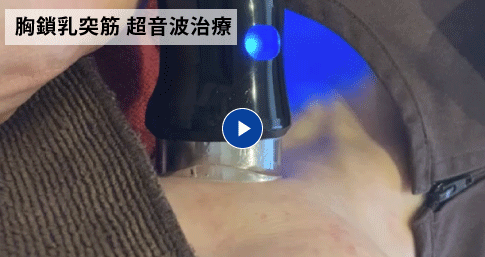Herniated disc
What is a Herniated Disc?
A herniated disc is a condition where part of the intervertebral disc, which is located between the bones of the spine, protrudes and presses against nerves, causing symptoms such as pain and numbness in the arms and legs. The intervertebral disc acts as a cushion between the vertebrae and allows the spine to move flexibly.
Behind the spine, there is a space called the spinal canal, which is surrounded by bones. This space contains the nerves that connect the brain to the arms and legs. When the intervertebral disc protrudes into this space and compresses the nerves, it can cause pain and numbness in the arms and legs or make it difficult to move them.
While it is most common in men between the ages of 20 and 40, herniated discs can affect individuals of all ages, from young to elderly.
Main Symptoms
Typically, symptoms begin with lower back pain or what is commonly known as “acute low back pain.” After a few days, severe “pain” or “numbness” may radiate to one leg. This pain is intense and can severely limit mobility, sometimes interfering with sleep. However, the peak of the symptoms usually passes after 2 to 3 weeks, and the symptoms often gradually fade thereafter.
The main symptoms include pain and numbness in the buttocks or legs, difficulty moving, and weakness. These symptoms can appear anywhere in the lower body, but pain that radiates from the buttocks to the back of the thighs is characteristic of sciatica, which is a typical symptom of lumbar hernia.
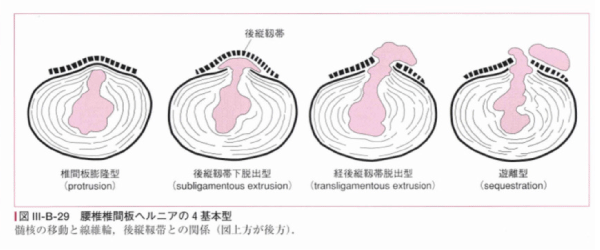
Cervical hernia (cervical disc herniation) primarily causes symptoms such as pain, numbness, difficulty moving, and weakness in the hands. The location of the hernia determines the area affected by pain and numbness, and the pain may spread to the neck and shoulder blades. In severe cases, symptoms may include numbness in the legs and difficulty walking.
Before experiencing symptoms in the hands and legs, one may only feel pain in the neck or lower back. The onset of symptoms can be sudden or gradual.
These symptoms can also occur in other conditions such as spinal stenosis, and it can be difficult to distinguish between these conditions based on symptoms alone.
Causes
A herniated disc occurs when part of the soft tissue (intervertebral disc) between the vertebrae protrudes beyond the space it normally occupies, compressing or irritating the nerves, resulting in pain and numbness.
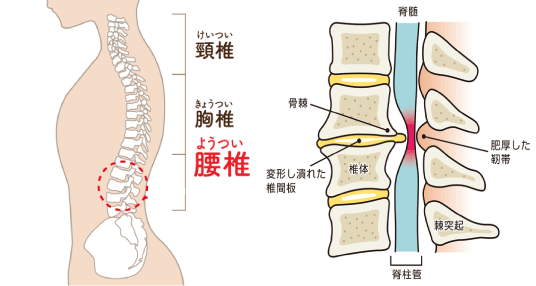
Intervertebral discs have very few blood vessels and depend on nutrient diffusion from surrounding tissues, making them more susceptible to degenerative changes (aging and age-related changes). The water content of the nucleus pulposus decreases from 88% in childhood to 66% in old age, reducing its cushioning effect. Repeated torsional forces can cause cracks in the annulus fibrosus.
While many animals experience vertical gravitational forces on their spine, humans, being bipeds, have gravity acting parallel to the spine when standing. This puts more pressure on the intervertebral discs compared to other animals. It’s not only heavy lifting, intense sports, or daily movements like bending that strain the discs; recent studies also suggest genetic factors and societal aspects (work-related stress, family environment, etc.) play a significant role in the development of herniated discs, especially since it tends to occur more frequently in the same family.
Diagnosis
The diagnosis is made by checking whether there is reduced sensation in the lower limbs or weakness in the feet through tests like straight leg raise (SLR) and sensory evaluation. Further confirmation is done with imaging tests such as X-rays and MRI.

If the cervical spine is bent backward or diagonally, pain or numbness in the arms and hands may intensify. The diagnosis is made based on weakness in the sensation and strength of the arms and legs, along with abnormalities in the tendon reflexes.
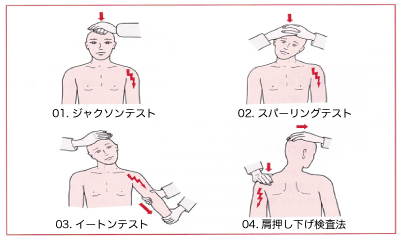
General Treatment Methods
During periods of intense pain, rest is emphasized, and a corset may be worn. Additionally, anti-inflammatory painkillers, suppositories, and nerve blocks are used to alleviate pain. Once the pain subsides, physical therapy such as traction and exercise therapy may be implemented. If there is no improvement with these methods, or if there is leg weakness or urinary dysfunction, surgery may be recommended. Recently, minimally invasive surgery using an endoscope has also become widely performed.
During periods of intense pain, maintaining neck rest is important, and a cervical collar may be used. Pain is alleviated through medications such as analgesics and anti-inflammatory drugs, as well as nerve blocks. Depending on the symptoms, traction therapy or exercise therapy may also be performed. If there is no improvement with these methods and if there is persistent muscle weakness in the upper or lower limbs, or if there are walking or urinary issues, surgical treatment may be considered.
Medical Japan’s Hernia Treatment Interventions
Hernia treatment involves either invasive therapy (surgery to eliminate pain) or conservative therapy (recovery without surgery). Here, we will focus on the conservative therapy (recovery without surgery) that we provide at our clinic.
One effective conservative therapy for hernias is “Ultrasound Acupuncture”, a groundbreaking treatment unique to our clinic.
Ultrasound Acupuncture
Intervention Example 1: “Ultrasound Acupuncture”
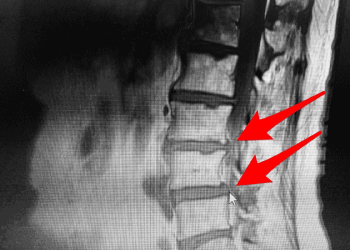
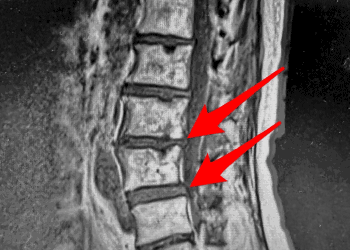
An MRI is taken at an affiliated medical facility. By understanding the affected area, the precision and effectiveness of the medical treatment are enhanced.
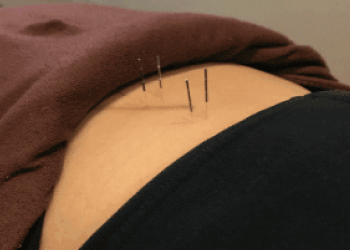
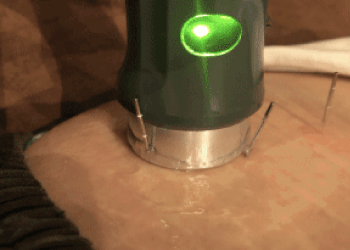
Ultrasound → Increases blood flow to the spinal arteries and arterial plexus due to deep heat.
Intervention Example 2: Ultrasound Acupuncture
The affected area is photographed using an ultrasound. The alignment of the quadratus lumborum muscles on both the healthy and affected sides is checked while moving, and differences in muscle movement are observed.
By understanding the affected area, the precision and effectiveness of the medical treatment are enhanced.
Acupuncture is applied to the areas with poor sliding properties of the muscles observed on the ultrasound.
Additionally, a combination of high-frequency therapy and ultrasound therapy devices (Astron) is used to relieve muscle tension with high-frequency waves, which can suppress the transmission of pain.
Ultrasound Therapy
Ultrasound is applied to the specific area with either a non-thermal effect or thermal effect.
An MRI is taken at an affiliated medical facility. By understanding the affected area, the precision and effectiveness of the medical treatment are enhanced.
Ultrasound → Increases blood flow to the arterial plexus due to deep heat.
| Before | After | |
 |
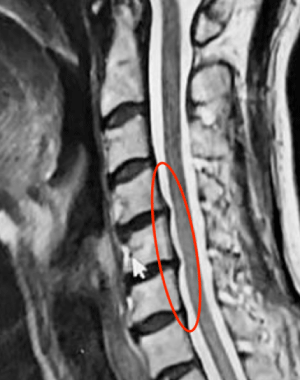 |
|
| Hernia Protrusion | + Cervical vertebrae 3, 4, 5 |
± Only cervical vertebra 5 remains |
| Occipital Region | Muscle Weakness | Normal Muscle Strength |
Additionally, using high-frequency therapy equipment and ultrasound therapy combined with physical therapy devices (Astron), we expect a relaxing effect on muscle tension and pain transmission suppression.

For hernias at high-level L3/4 and L4/5, Ultrasound + High-Frequency Therapy
High Frequency → Pain relief through conduction block effect.
For patients visiting our clinic, the condition improves from NRS 10 to 3.4 within 3 weeks with twice-weekly sessions. Furthermore, we focus on individual
Examples of Interventions Only Medical Japan Can Provide
AI Posture Analysis System
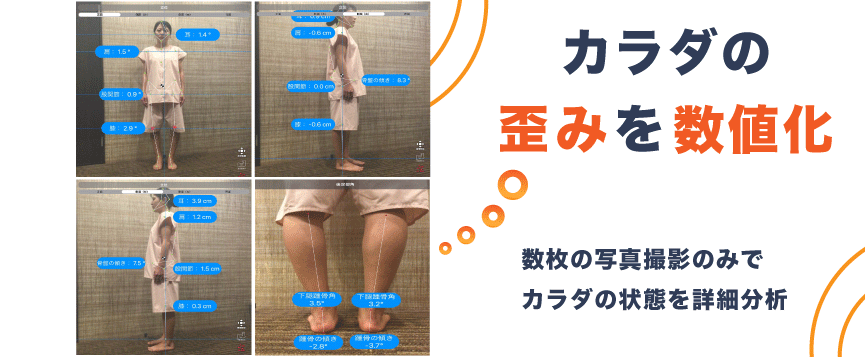
From the current posture, it is possible to estimate the areas where muscles become tight, the sources of pain, and future postures. This helps explain the treatment policy and its effects in a more understandable way. It also makes it easier for patients to understand the condition of their bodies.
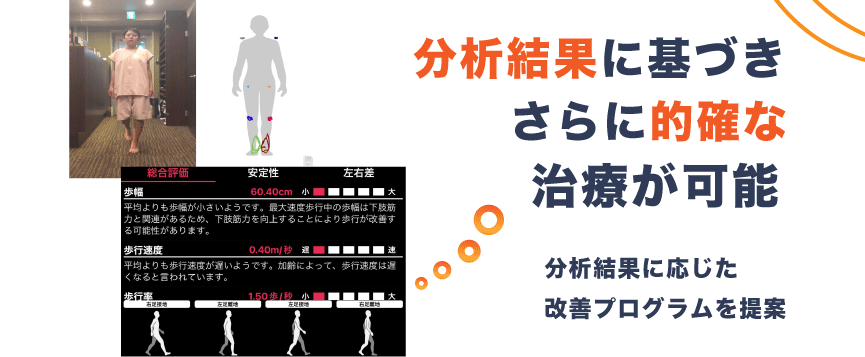
With this, you can identify which muscles need to be relaxed and which ones should be trained. By recognizing your own body, you can understand what needs to be improved. Of course, even more precise treatments can be carried out. Based on this analysis, we can provide you with training methods and stretches that are tailored to you.
Myopressure (Gait Diagnosis Machine)
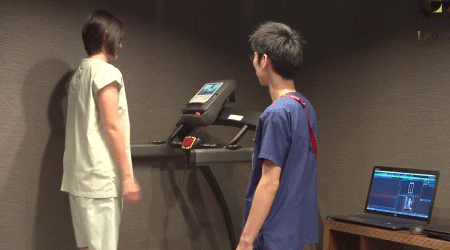
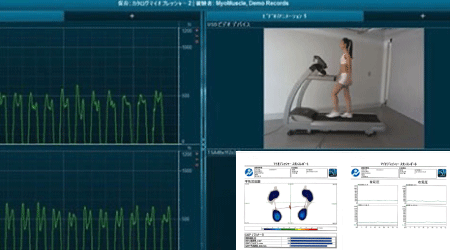
When walking on a treadmill with approximately 20,000 sensors, you can learn about your foot pressure, center of gravity shift, and left-right load distribution. Additionally, two cameras allow you to visually confirm your walking posture.
There has been a significant change after a year and a half of rehabilitation!
Insoles & Shoe Prescriptions

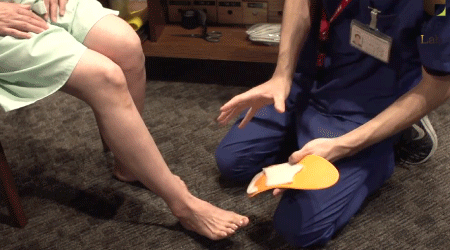
Based on the results measured by the Myopressure (gait diagnosis machine), we can create insoles that are better suited to your body. You can visually confirm the imbalance of your center of gravity and the irregularities in your foot’s trajectory, which will allow for more accurate foot usage during walking.
By using insoles that are tailored to your body, you can enhance your foot’s natural function, support the arch properly, and make it easier to maintain a correct center of gravity. This leads to improved performance, increased stamina, reduced fatigue, and less stress on your muscles and body, making walking more comfortable.
[Realign Core] [Realign Balance Shoes]
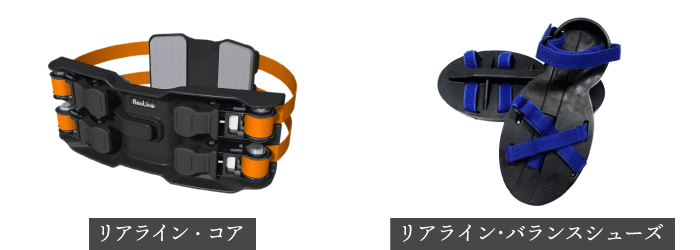
Realign Core is a motion assist device designed to correct the misalignment of the pelvis and ribcage, which form the body’s core. When “misalignment (asymmetry)” occurs in the pelvis and ribcage, it can negatively impact the spine, shoulders, neck, and hip joint movement functions.
To prevent strain on the lower back, it is important to avoid activities that may involve bending at the waist or carrying heavy objects. Furthermore, strengthening and improving the flexibility of the muscles around the lower back is necessary. During the treatment period, it is essential to strengthen muscles within a range that does not worsen the condition.
Specifically, it is important to improve the flexibility of the core muscles, glutes, and adductors, as well as strengthen inner muscles such as the multifidus, transverse abdominis, and pelvic floor muscles to enhance abdominal pressure.
Recommendation from a Doctor
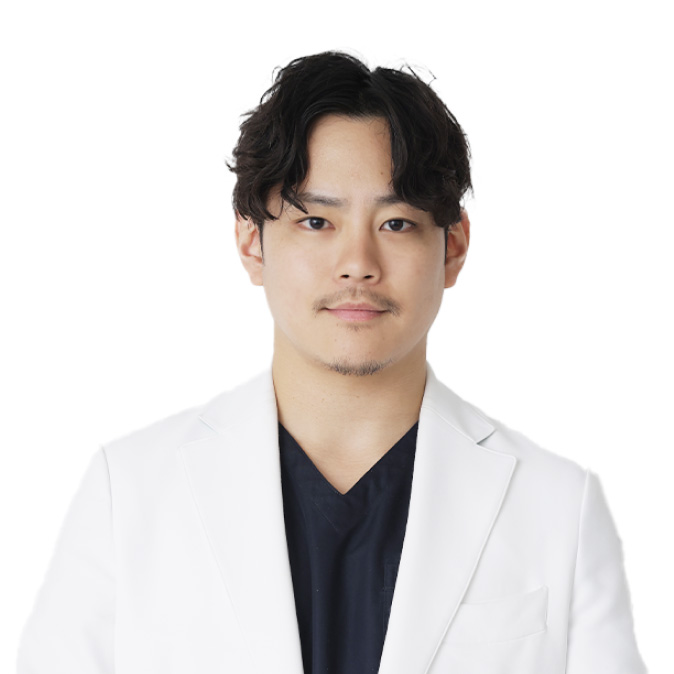

Career & Achievements
・Graduated from Kyoto University Faculty of Engineering, Department of Physics
・Completed special training at Harvard Medical School
・Graduated from Nara Medical University
・Cosmetic Surgeon, Dermatologist, Orthopedic Surgeon
I am Ryohei Tsuchida, the Chief Doctor at Tokyo Bisen Clinic Shibuya. At our clinic, we specialize in treating various musculoskeletal symptoms based on orthopedic knowledge, with a fully-equipped X-ray room for high-precision diagnosis.
While we broadly handle musculoskeletal symptoms, I strongly recommend the treatments provided by Medical Japan as reliable and effective options.
For example:
Acupuncture & Osteopathy to fundamentally improve pain and numbness
We aim for sustainable recovery by addressing the root causes of pain and numbness, such as shoulder pain, lower back pain, arthritis, myofascial pain, and neuralgia.
Rehabilitation & Evaluation Analysis to prevent recurrence
Based on detailed assessments, we create individualized rehabilitation plans to prevent recurrence of knee and shoulder joint disorders, as well as recurring back pain.
Strengthening Exercises to enhance the body
After recovery, we focus on strengthening the body to prevent recurrence, sports injuries, and muscle weakness.
Medical Japan offers evidence-based comprehensive health support, making it an ideal clinic for those dealing with musculoskeletal issues such as shoulder pain, lower back pain, arthritis, myofascial pain, and sports injuries.
Patient Testimonials

